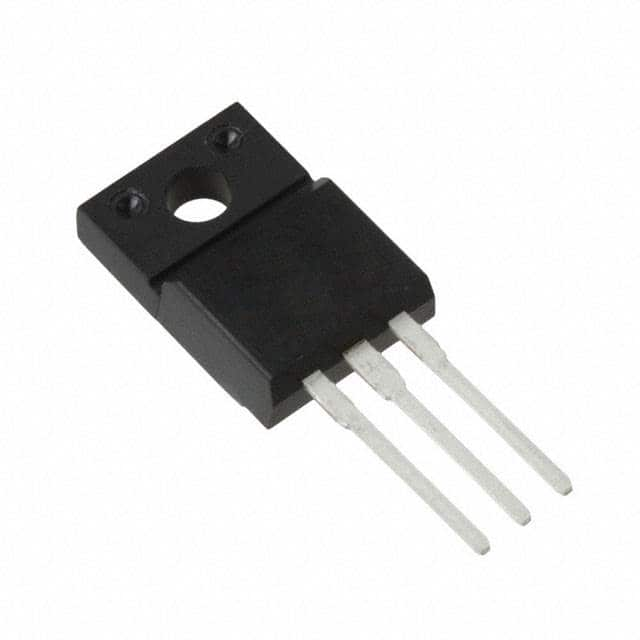2SC4793(F,M) - Encyclopedia Entry
Product Overview
The 2SC4793(F,M) is a semiconductor product belonging to the category of high-frequency, high-speed switching transistors. It is commonly used in electronic circuits for amplification and switching applications due to its unique characteristics. The 2SC4793(F,M) is available in various packages and quantities, making it suitable for a wide range of electronic designs.
Basic Information
- Category: High-frequency, high-speed switching transistors
- Use: Amplification and switching applications
- Characteristics: High frequency, high speed, low noise
- Package: TO-220F, TO-220ML
- Essence: Semiconductor device for electronic circuit design
- Packaging/Quantity: Available in reels or tubes, quantity varies based on supplier
Specifications
The 2SC4793(F,M) transistor has the following specifications: - Collector-Base Voltage (VCBO): 230V - Collector-Emitter Voltage (VCEO): 230V - Emitter-Base Voltage (VEBO): 5V - Collector Current (IC): 1A - Power Dissipation (PD): 1.5W - Transition Frequency (fT): 30MHz - Operating Temperature: -55°C to 150°C
Detailed Pin Configuration
The 2SC4793(F,M) transistor has a standard pin configuration with three leads: 1. Collector (C) 2. Base (B) 3. Emitter (E)
Functional Features
The 2SC4793(F,M) offers the following functional features: - High-frequency operation - High-speed switching - Low noise amplification - Reliable performance in electronic circuits
Advantages and Disadvantages
Advantages
- High-frequency capability
- Fast switching speed
- Low noise amplification
- Wide operating temperature range
Disadvantages
- Limited collector current compared to some alternatives
- Sensitive to overvoltage conditions
Working Principles
The 2SC4793(F,M) operates based on the principles of semiconductor physics, utilizing its specific doping and layering to control the flow of current between its terminals. When biased and connected in a circuit, it can amplify or switch electronic signals effectively.
Detailed Application Field Plans
The 2SC4793(F,M) is commonly used in the following application fields: - Audio amplifiers - Switching power supplies - RF amplifiers - Oscillator circuits - Electronic control systems
Detailed and Complete Alternative Models
Some alternative models to the 2SC4793(F,M) include: - 2SC5200 - 2N3055 - MJL21193 - MJE13005
In conclusion, the 2SC4793(F,M) transistor is a versatile component widely used in electronic circuits for its high-frequency, high-speed switching capabilities, making it an essential part of various electronic designs.
[Word Count: 404]
قم بإدراج 10 أسئلة وإجابات شائعة تتعلق بتطبيق 2SC4793(F,M) في الحلول التقنية
Sure, here are 10 common questions and answers related to the application of 2SC4793(F,M) in technical solutions:
What is the maximum collector current of 2SC4793?
- The maximum collector current of 2SC4793 is 1.5A.
What is the maximum collector-emitter voltage of 2SC4793?
- The maximum collector-emitter voltage of 2SC4793 is 150V.
What is the typical gain (hfe) of 2SC4793?
- The typical gain (hfe) of 2SC4793 is around 100-320.
Can 2SC4793 be used in audio amplifier circuits?
- Yes, 2SC4793 can be used in audio amplifier circuits due to its high current and voltage ratings.
What are the typical applications of 2SC4793?
- Typical applications of 2SC4793 include audio amplifiers, power supply circuits, and general switching applications.
Is 2SC4793 suitable for high-frequency applications?
- No, 2SC4793 is not suitable for high-frequency applications due to its limited frequency response.
What are the differences between 2SC4793F and 2SC4793M?
- 2SC4793F and 2SC4793M are similar in terms of electrical characteristics, but they may have different packaging or manufacturing processes.
What is the maximum power dissipation of 2SC4793?
- The maximum power dissipation of 2SC4793 is typically around 20W.
Can 2SC4793 be used in linear voltage regulator circuits?
- Yes, 2SC4793 can be used in linear voltage regulator circuits due to its high voltage and current capabilities.
Are there any known reliability issues with 2SC4793?
- There are no significant known reliability issues with 2SC4793 when used within its specified operating conditions.
I hope these questions and answers are helpful for your technical solutions involving 2SC4793. Let me know if you need further assistance!


